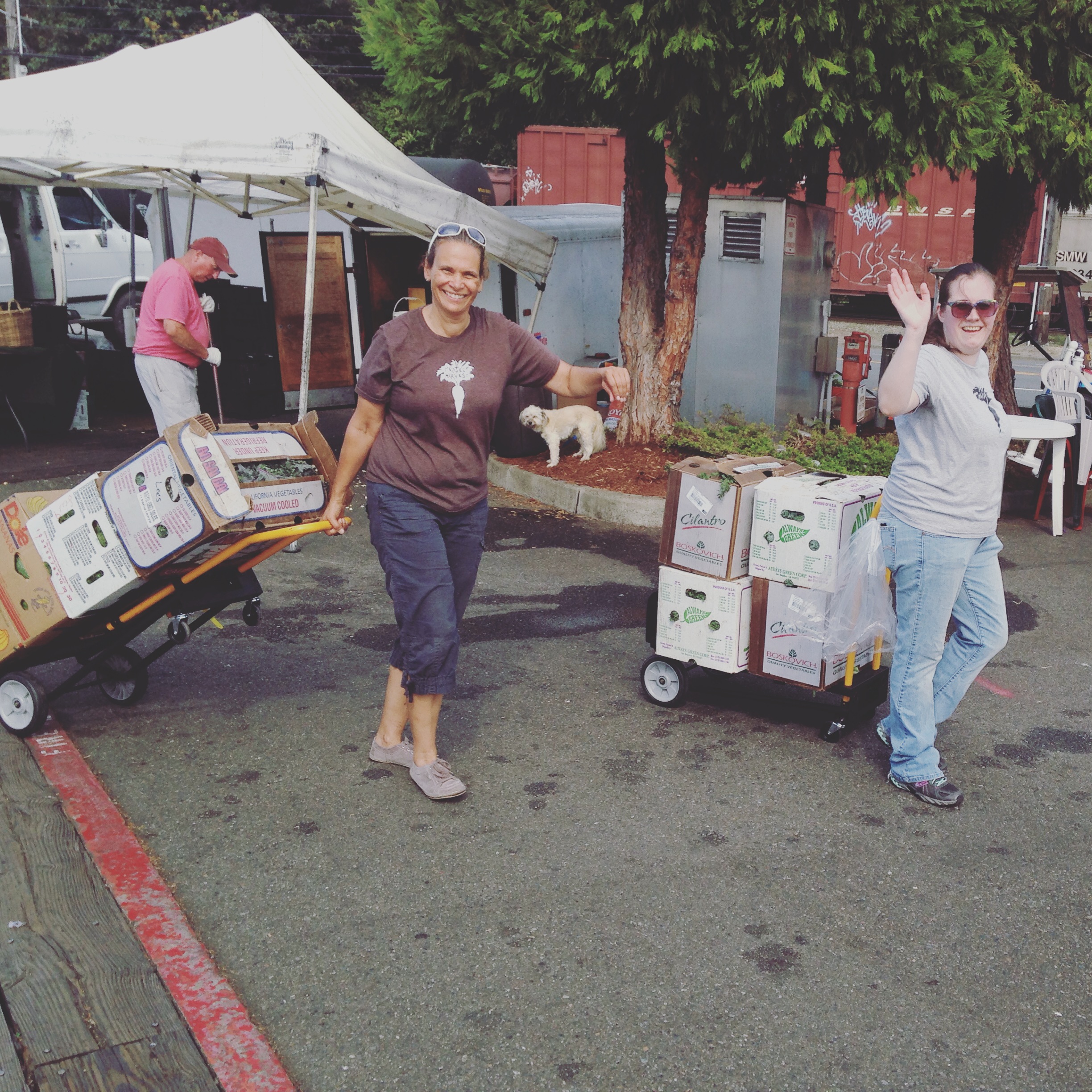
Reach out to the Farmers Market Coordinator to express interest in setting up market Recovery. Try to set up a meeting to learn more about the Farmers Market and have them help you set up this opportunity if they think there will be interest from the vendors. Create an article or letter explaining your program to send out through the market coordinator to future vendors.
Look at your county market schedule (or create one), odds are if there is a last market of the week it will be a better scenario for a market cull (possibly the end of the vendor’s selling week). Of course this varies from community to community/market to market.
Determine where the produce will be dropped off (ideal to coordinate with food bank/distribution center with refrigerator nearby). If that is not possible, glean produce that does not need refrigeration and deliver following day when a food bank is open.
Develop a plan for market recovery process, but have expectations to evolve process! Make this clear to volunteers so they are prepared to roll with the punches. This way they will understand if you need to change timing/boxes/drop off time etc.
Create a hand out or packet to share information regarding your program and where the produce is going. This will help create program professionalism and help carry the message that this program is aiming to be sustainable for the market. It will also help connect the vendors to the food bank community and populations being served by their donations.
First Market: Check in with farmer’s market coordinator to let them know you are there. When there is a break in customers, approach produce vendors to explain program and distribute info packets to gain interest. Also introduce all volunteers helping out to create familiarity with group of volunteers! Explain recovery plan or ask vendors what would work best for them (this may vary from vendor to vendor, delivering boxes to them works very well!). FYI: not all vendors will be interested: many vendors save produce for family or friends, and berry vendors utilize extra for making jams.
How the Project Harvest Market Recovery Team executed the weekly market glean:
Volunteers arrived 20-30 minutes before the close of market. Volunteers distributed boxes to vendors that participate in program. Allow vendors time to take-town market/sort through produce, when enough time has passed collect boxes (great to utilized collapsible dolly), marked boxes with permanent marker with name of farm, load boxes in car, delivered to distribution center walk-in cooler. The boxes were then weighed the following day and allocated to various food banks for the distribution center weekly pick-ups. Records of volunteer hours and donations were tracked to provide vendors with receipts and thank you notes through the farmer’s market recovery records and donation receipt record excel spreadsheets


